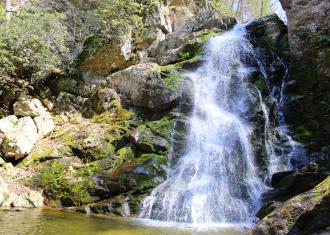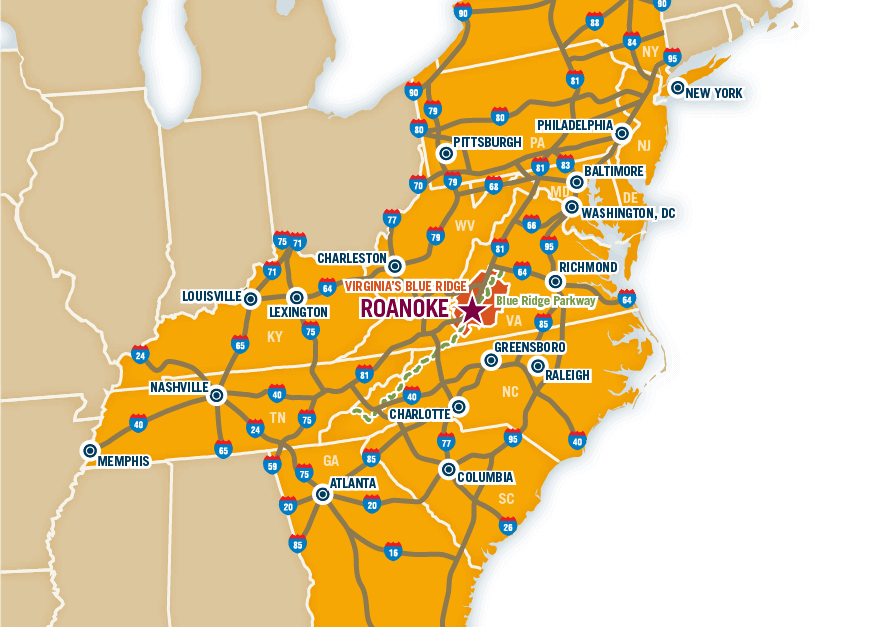-
Things To Do
- Arts & Culture
- Attractions
- Beer, Wine & Spirits
- Blue Ridge Parkway
- Events
- Free Things To Do
- History & Heritage
- Kid Friendly
- Nightlife
-
Outdoor Adventure
- Leave No Trace
- Appalachian Trail
- Biking
- Climbing
- Disc Golf
- Fall Color Spots
- Fishing
- Geocaching
- George Washington & Jefferson National Forests
- Greenways
- Hiking Trails
- Horseback Riding
- Kayaking & Paddling
- Kid Friendly Outdoors
- Motorcycle Touring
- Outdoor Outfitters & Shops
- Scenic Drives
- Water Sports
- Wildlife Viewing & Birding
- Classes & Workshops
- Sample Itinerary
- Sample Itineraries
- Shopping
- Spas
- Sports
- Tours
- VBR Savings Pass
- Hotels/Lodging
- Restaurants
- Region
- Plan
Leave No Trace in Virginia's Blue Ridge
 Visit Virginia’s Blue Ridge is proud to be an official Leave No Trace Community Partner.
Visit Virginia’s Blue Ridge is proud to be an official Leave No Trace Community Partner.
The Leave No Trace Center for Outdoor Ethics focuses on education and the importance of responsible recreation and the protection of our outdoor areas and public lands.
We believe that we can all work together to experience the stunning beauty of Virginia’s Blue Ridge while recreating responsibly and minimizing our impacts on the environment so that it can continue to be enjoyed for generations to come.
Before any outdoor adventure in Virginia’s Blue Ridge, we encourage you to familiarize yourself with the Leave No Trace Seven Principles. These guidelines are a great way to protect nature when you spend time on the trails and outside.
The Leave No Trace Seven Principles were originally created for backcountry outdoor experiences, but can be applied to a wide range of activities, including remote wilderness areas and local parks.
The Leave No Trace Seven Principles
- Plan Ahead & Prepare
- Travel & Camp on Durable Surfaces
- Dispose of Waste Properly
- Leave What You Find
- Minimize Campfire Impacts
- Respect Wildlife
- Be Considerate of Other Visitors
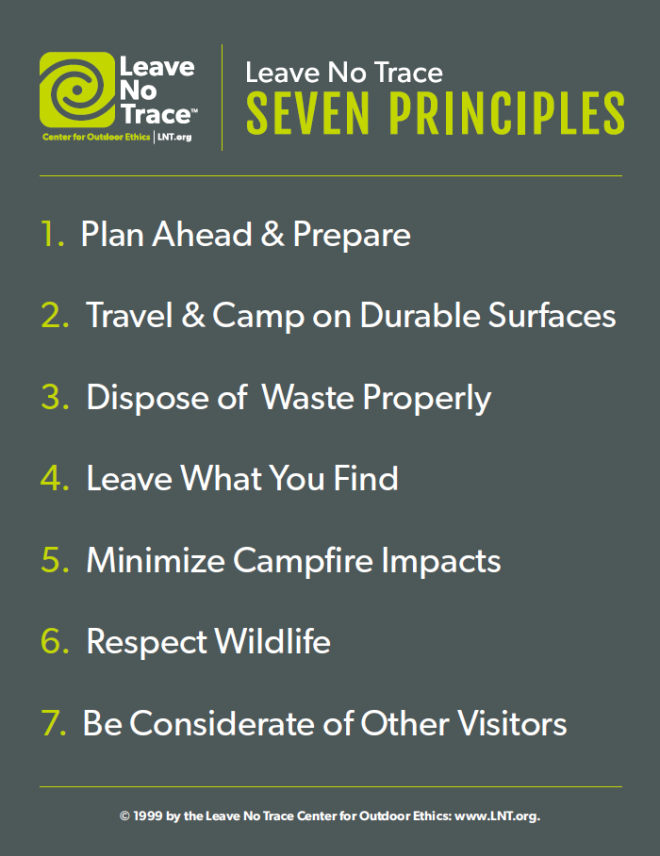
1. Plan Ahead & Prepare

- Know the regulations and special concerns for the area you’ll visit.
- Prepare for extreme weather, hazards, and emergencies.
- Schedule your trip to avoid times of high use.
- Visit in small groups when possible. Consider splitting larger groups into smaller groups.
- Repackage food to minimize waste.
- Use a map and compass to eliminate the use of marking paint, rock cairns, or flagging.
Learn More: Plan Ahead & Prepare >
2. Travel & Camp on Durable Surfaces
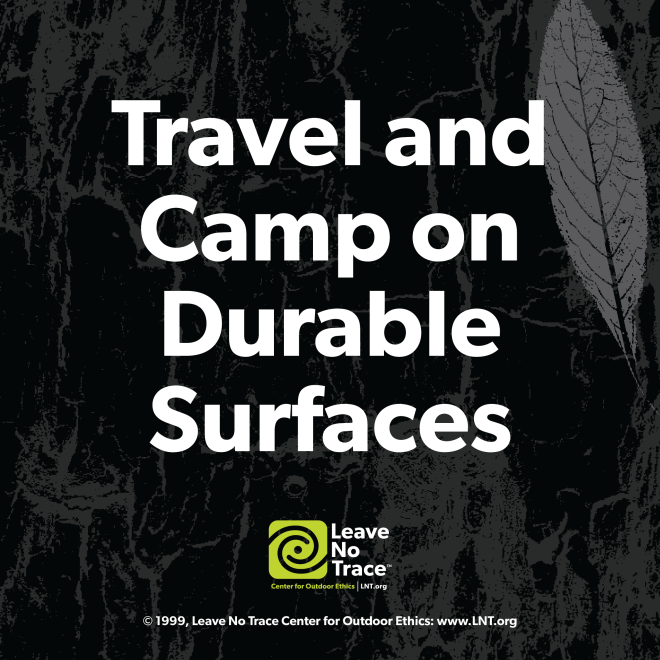
- Durable surfaces include established trails and campsites, rock, gravel, dry grasses, or snow.
- Protect riparian areas by camping at least 200 feet from lakes and streams.
- Good campsites are found, not made. Altering a site is not necessary.
- In popular areas:
- Concentrate use on existing trails and campsites.
- Walk single file in the middle of the trail, even when wet or muddy.
- Keep campsites small. Focus activity in areas where vegetation is absent. - In pristine areas:
- Disperse use to prevent the creation of campsites and trails.
- Avoid places where impacts are just beginning.
Learn More: Travel and Camp on Durable Surfaces >
3. Dispose of Waste Properly

- Pack it in, pack it out. Inspect your campsite and rest areas for trash or spilled foods. Pack out all trash, leftover food and litter.
- Deposit solid human waste in catholes dug 6 to 8 inches deep, at least 200 feet from water, camp and trails. Cover and disguise the cathole when finished.
- Pack out toilet paper and hygiene products.
- To wash yourself or your dishes, carry water 200 feet away from streams or lakes and use small amounts of biodegradable soap. Scatter strained dishwater.
Learn More: Dispose of Waste Properly >
4. Leave What You Find
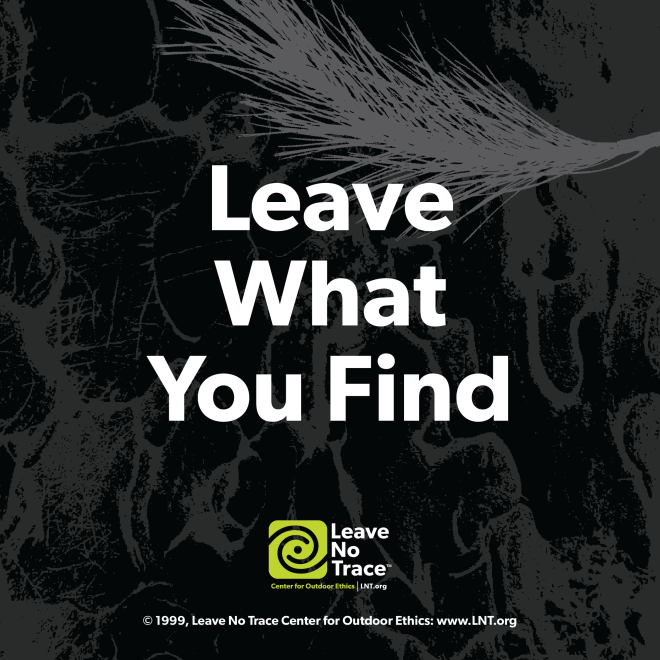
- Preserve the past: examine, but do not touch cultural or historic structures and artifacts.
- Leave rocks, plants and other natural objects as you find them.
- Avoid introducing or transporting non-native species.
- Do not build structures, furniture or dig trenches.
Learn More: Leave What You Find >
5. Minimize Campfire Impacts

- Campfires can cause lasting impacts to the environment. Use a lightweight stove for cooking and enjoy a candle lantern for light.
- Where fires are permitted, use established fire rings, fire pans, or mound fires.
- Keep fires small. Only use sticks from the ground that can be completely broken by hand.
- Burn all wood and coals to ash, put out campfires completely, then scatter cool ashes.
Learn More: Minimize Campfire Impacts >
6. Respect Wildlife
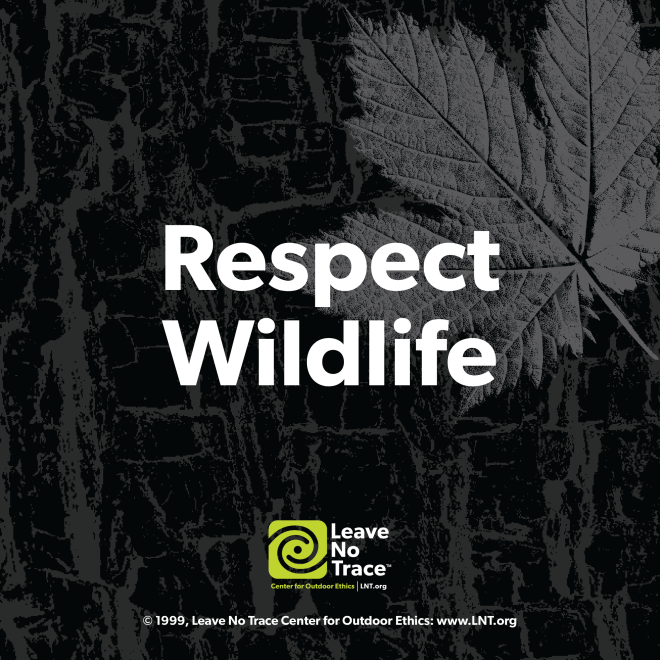
- Observe wildlife from a distance. Do not follow or approach them.
- Never feed animals. Feeding wildlife damages their health, alters natural behaviors, and exposes them to predators and other dangers.
- Protect wildlife and your food by storing rations and trash securely.
- Control pets at all times, or leave them at home.
- Avoid wildlife during sensitive times: mating, nesting, raising young, or winter.
Learn More: Respect Wildlife >
7. Be Considerate of Other Visitors
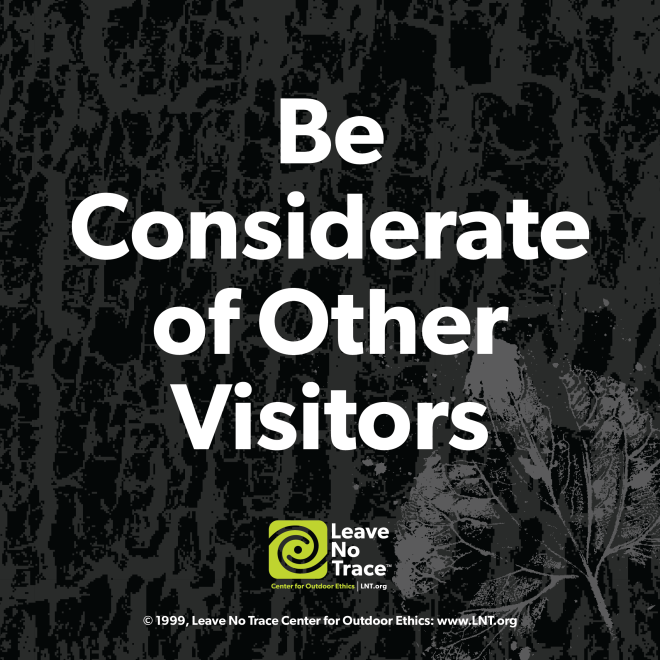
- Respect other visitors and protect the quality of their experience.
- Be courteous. Yield to other users on the trail.
- Step to the downhill side of the trail when encountering pack stock.
- Take breaks and camp away from trails and other visitors.
- Let nature’s sounds prevail. Avoid loud voices and noises.
Learn More: Be Considerate of Other Visitors >
For more information about The 7 Principles of Leave No Trace and other ways you can get involved and help protect the outdoors, check out their website at lnt.org.
© 1999 by the Leave No Trace Center for Outdoor Ethics: www.LNT.org.
In This Section
From the Blog!
Memorial Day weekend in Virginia's Blue Ridge is a chance to honor fallen heroes while soaking up
In the glory of Virginia’s Blue Ridge, you’ll find the breathtaking Upper James River Water Trail.
Spring is here! The weather has been variable so far this March, but there have been some really
Waterfalls are a favorite draw for most anyone, outdoor explorer or not. They seem to make us happy,
The non-commercialized 469-mile Blue Ridge Parkway begins in Waynesboro, Virginia, and stretches all
Want the latest on Virginia’s Blue Ridge? Securely sign up for our FREE e-newsletter:
Visit Virginia's Blue Ridge 101 Shenandoah Avenue NE Roanoke, VA 24016 (540) 342-6025 (800) 635-5535
Visit Virginia’s Blue Ridge is committed to cultivating an atmosphere that welcomes and celebrates the unique backgrounds, abilities, passions, and perspectives of our vibrant community. As our region’s only destination marketing organization, we have a responsibility to showcase the best the Roanoke Region has to offer, and those assets and strengths come in varied forms. We embrace differences in race, religion, sexual orientation, gender, gender identity or expression, language, visible and invisible disabilities, and all the intersecting identities that make Virginians and visitors alike so unique. We believe our differences make us stronger– and better.





